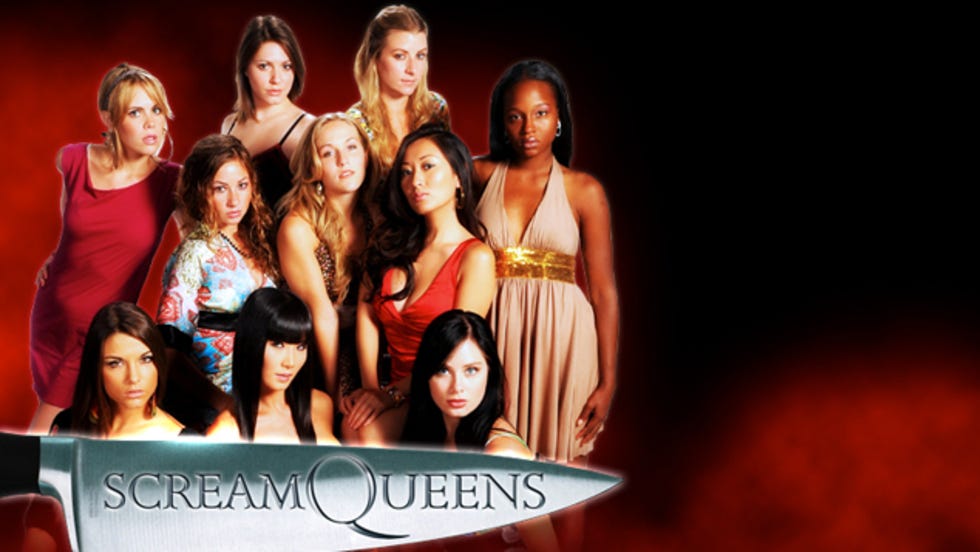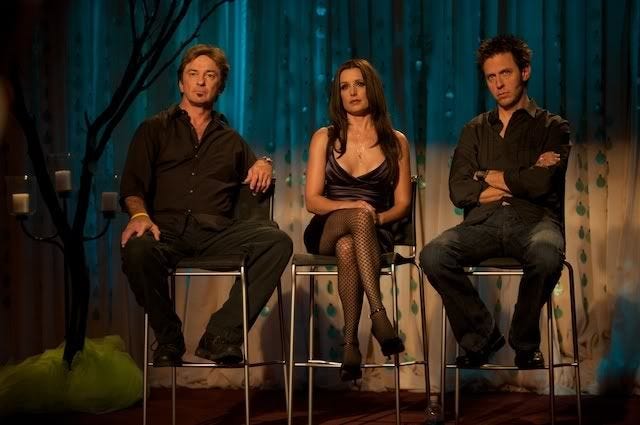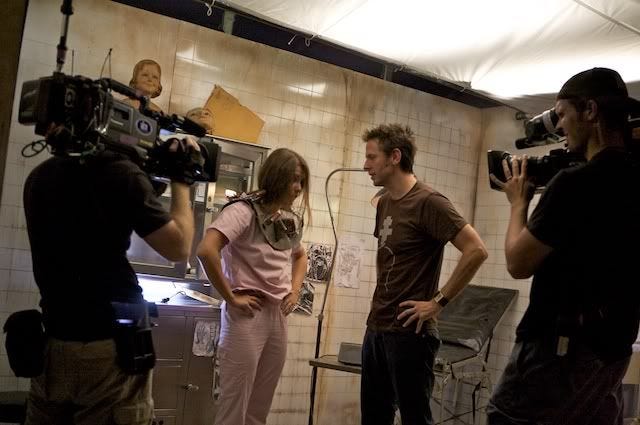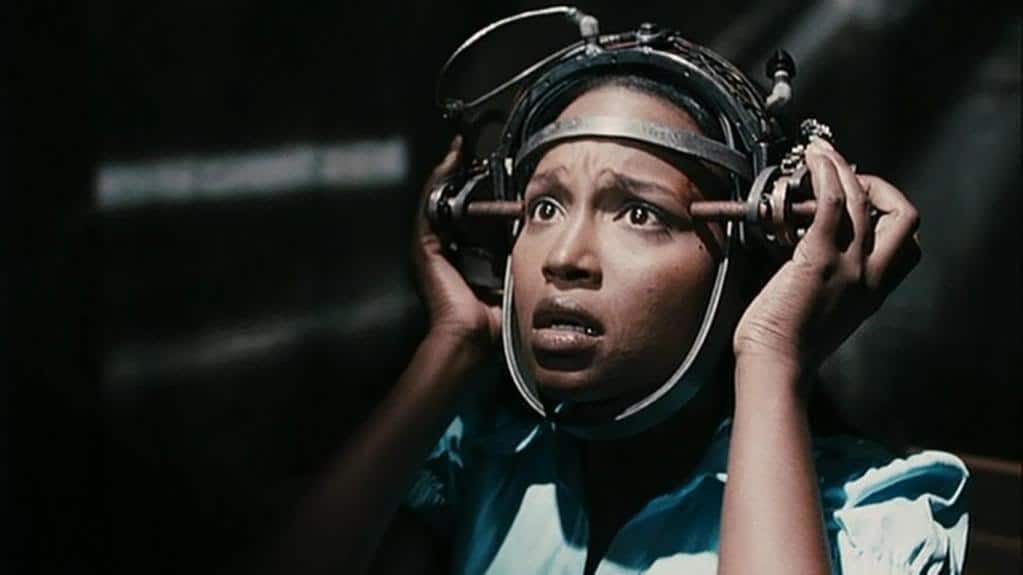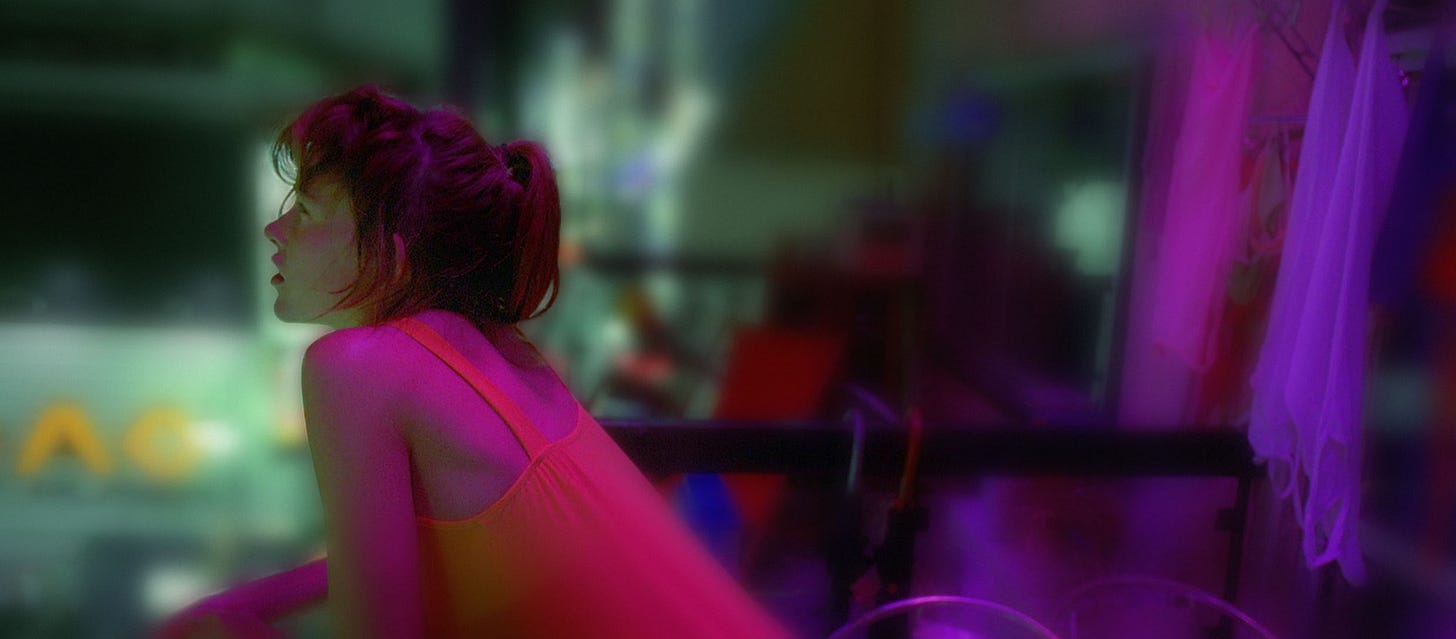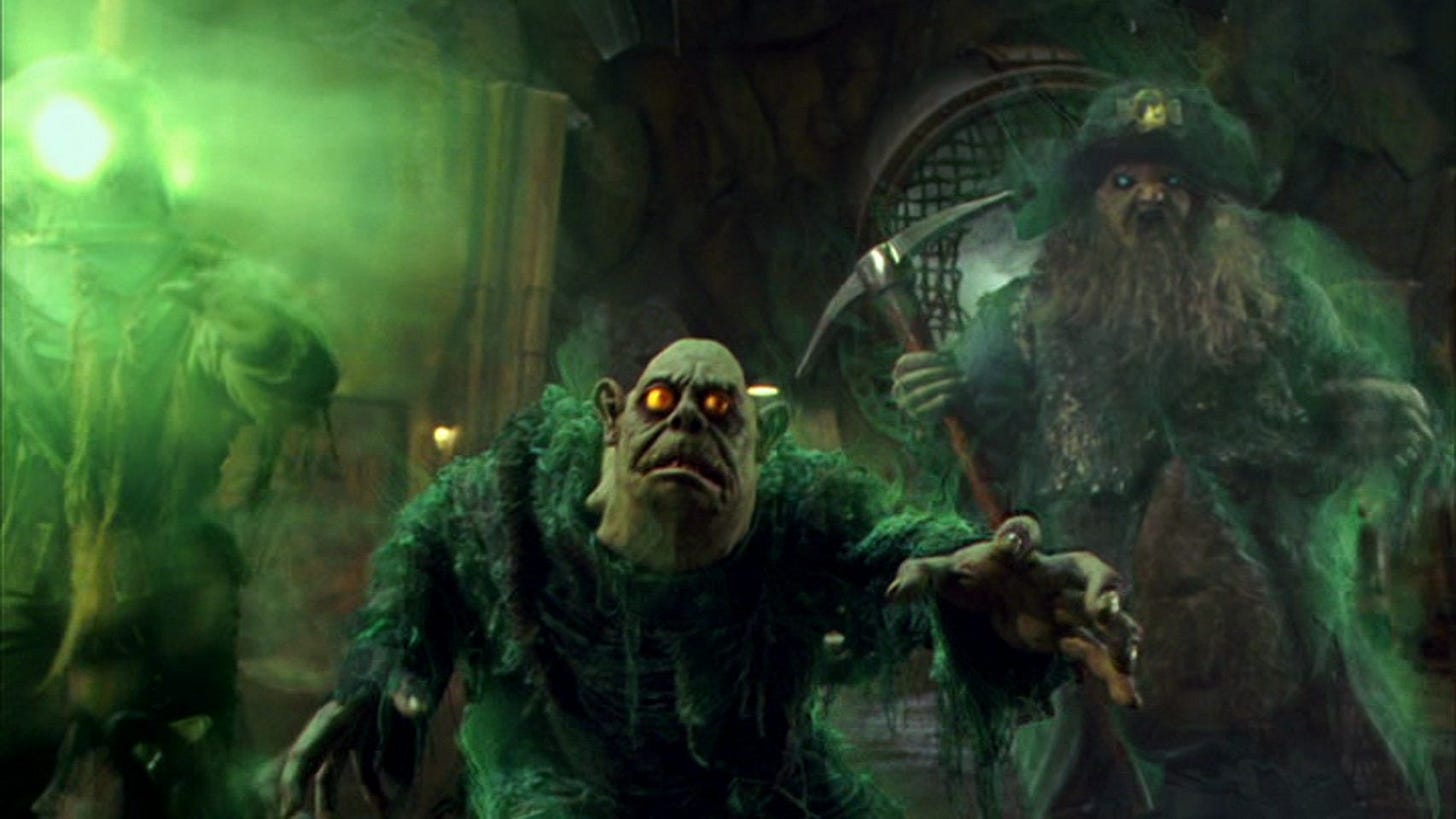Issue 8: MOOD is here 🎭
Plus, an exclusive newsletter feature on the SAW-themed reality TV show (yes, you read that right)
Issue 8: MOOD + Launch Party
Our newest issue is here and well, it’s a MOOD. Inspired by our Film Recommendation Generator, this issue features film recs curated by our contributors, based on a mood. Here’s an excerpt from our Editor’s Note by Gabrielle Marceau:
“An Editor's Note is inherently self-reflexive. It isn't a piece of criticism, but a piece that tries to teach you how to read criticism. At In the Mood, we are loath to tell you how to feel about film, and also about film criticism: after all, the endless variety of ways people feel—forgetful, ecstatic, abuzz, obsessive—is our bread and butter.”
Check out the full issue:
We’re also hosting a Halloween/launch party in Toronto tonight, October 24th! Join us for spooky readings and games with merch prizes 😈
Newsletter Feature
Act or Die, Make Your Choice: An Ode to Scream Queens
by Mark Hanson
The sixth installment of the Saw franchise begins as most of the Saw films do: with a game. A woman, played by newcomer Tanedra Howard, wakes up in a typically dingy room with an elaborate mechanical apparatus attached to her head. This device will soon send rusty screws into her brain—unless, that is, she cuts off more of her own flesh than the man in the adjoining room who has woken up in the same predicament. While the man frantically carves into his stomach, the woman responds by hacking off her entire arm with a meat cleaver to triumphantly win the competition. Horrific stuff, for sure; but this is child’s play compared to the gruelling game that Tanedra already played to get here, having conquered the first season of the VH1 competition series Scream Queens in 2008.
A relic from the late-aughts golden era of reality television (and preserved in this day and age by the content wizards at Tubi), Scream Queens puts the debased struggle to make it in Hollywood on gloriously trashy display. The premise: 10 aspiring actresses compete for a role in “a new film from horror masters Lionsgate and Twisted Pictures”, Saw VI. The judges? An unenthusiastic Shawnee Smith—Saw’s very own Amanda Young—perhaps bound to some kind of contract agreement from her horror masters at Lionsgate and Twisted Pictures. A pre-Marvel/DC James Gunn, hair spiked to the nines and jagged sideburns creeping into his mouth. And lastly, Hollywood acting coach John Homa, introduced with a clip in which he states, “I have a reputation for making people cry.”
Shawnee oversees the “acting challenge” portion of the show, in which she either cringes or looks bored while the contestants scream, cry, and generally overemote their way through impromptu line readings, stunts, prop work, and an assortment of other horror movie activities. Gunn, meanwhile, takes the lead during the “director’s challenge”, where the ladies get on set and perform a scripted scene for the cameras. In the first episode, the scene in question is a recreation of the “alien-slug-in-the-bathtub” bit from Gunn’s recent movie Slither, which leads to a spontaneous breakdown for one contestant, Jessica, who takes issue with the scene's required nudity. When the time comes to do the scene, however, she changes her mind and, refusing the nude underwear or nipple covers that are offered, eagerly does the scene completely topless. In her confessional, Jessica explains the reasoning behind the sudden 180: “It’s as simple as… that’s what I felt like doing in that moment, and that’s what I wanted to do.”
Sandwiched in between these two segments is the “acting class” with John Homa. Apparently known for coaching the likes of Kirsten Dunst and Michelle Williams, Homa thrives on pushing people out of their comfort zones, devising unorthodox exercises like a trip to the morgue so that the ladies can lie down in body storage cabinets to experience the feeling of death. In their first session together, Homa explains the importance of looking sexy on screen before giving each contestant a piece of fruit to eat seductively in front of him. Once they’ve all promptly humiliated themselves by fellating a banana or loudly panting while eating a grape, Homa is not impressed. “I’m asking you to be storytellers, not porn stars,” he barks. “We can’t lose our dignity here!”
Dignity, of course, can be in short supply when it comes to reality television participants. The potential scream queens run the gamut from semi-experienced pros like Lindsay, the former child star of a short-lived Nickelodeon show called Caitlin’s Way; to cutthroat novices like Michelle, a Texas beauty queen who calls the other women “ugly as shit”; and legitimate psychos like the aforementioned Jessica, whose intense googly-eyed style of acting is so bizarre that even Homa is frightened by it. The ladies, who live together in a Hollywood Hills house through the competition, routinely mock each other from the sidelines during the challenges. Later, a night out on the town quickly devolves into a drunken verbal melee where racist and antisemitic insults are gleefully thrown around, chiefly from Jessica and another insufferable contender named Lina. (Lina gets her comeuppance a couple of episodes later when she gets eliminated for refusing a same-sex make-out scene in the director’s challenge, drawing the ire of Gunn.)
Yet in the midst of all these messy personalities, Tanedra emerges as a true underdog to root for. Despite being the only contestant with no formal acting training or experience, Tanedra consistently impresses the judges with her raw talent. Recognizing her as a threat, the other ladies react by trying to get under her skin, taking jabs at her underprivileged background (cue Lina). But Tanedra remains unfazed, winning challenge after challenge and ultimately taking the crown in a heated final against Michelle. Tanedra would subsequently perform so well that after surviving the opening of Saw IV, her character, Simone, is then brought back in Saw 3D as a member of the Jigsaw survivor group, acting alongside no less than Cary Elwes.
Scream Queens must have been somewhat successful for VH1, as it was also brought back for a second go-around, albeit with a couple of personnel changes. Shawnee would finally be freed from this endeavour to be replaced by the more spirited Jaime King (“She’s my FAVOURITE actress!” one of the contestants exclaims upon being introduced to the My Bloody Valentine 3D star), while Gunn is substituted with Tim Sullivan, a director I’d never heard of despite the show repeatedly telling me that he made the hit film 2001 Maniacs: Field of Screams. Thankfully, Homa returns, upping the ante straight away with an alarming acting class demonstration of rage where he goes wild on an assortment of props with a baseball bat. He also adds a brand-new verbal command to his repertoire, shouting “Down!” at the contestants whenever he’s seen enough, as if they’re misbehaved dogs.
As a new batch of unhinged actresses lay everything on the table for a taste of Hollywood glory—the apex of which sees someone pull a full-on Basic Instinct leg cross to try and win a late-in-the-game challenge—it does become apparent that the collected talent is a bit of a step down from the prior season. Nevertheless, another victor is eventually named in Gabby West, an inconsistent performer who displays an intriguingly aloof charisma despite struggling mightily with the technical aspects of shooting. This may unfortunately be the reason why Gabby’s role in Saw 3D, unlike Tanedra’s, amounts to nothing more than a glorified extra part where she’s tied up screaming before her head is hideously crushed by a car tire. To be fair, neither Tanedra nor Gabby saw their acting careers flourish in the wake of the show, their quest to become the next Shawnee Smith or Jaime King remaining sadly unrealized. In life, as in Saw, sometimes winning the game means you end up losing anyway.
Mark Hanson is a film writer and curator from Toronto, Canada, and the product manager at Bay Street Video, one of North America’s last remaining video stores.
…and some hand-picked pieces on hauntings and monsters from our new issue
Tricks or Treats? A Haunted Trio of Double Features
Marked by omnipotent shots, unsettling sound, and liminal landscapes that unseat us from ourselves, each of these films is a haunted house and each of us, our own ghost.
ENTER THE VOID / THE SHINING
A natural pairing with Kubrick’s ongoing themes (how we happen to be here and how we’ll take ourselves out) and Noé’s themes (what to do with ourselves in the meantime). Both films are visual feasts and elaborate colour studies, cyclical and maddening, but also nativities of trauma and Freudian spectacles. I assumed The Shining was an acknowledged influence, but according to Gasper Noé, 2001: A Space Odyssey was the film at the forefront of his mind. This checks out with fetal themes and futuristic hues, but then there are the hotels. Noé’s Love Hotel is romantic, neon, but maze-like and piled with patterns; like The Overlook, it exists outside of time or as a model on a table. Boundaries dissolve as Noé’s guests are thrust into orgiastic throes of passion, while their genitals emit a pulsating glow.
Both narratives are poltergeists—distortions and disruptions—and laid with traps. While Enter The Void is modern and technicolor, there’s an underlying palette that Kubrick lifted from Dutch Renaissance painters; the story is told in moody hues, opaque and unsettling, in broad swathes of blood red, shadows and light. Audio is barely discernible and scenes are sporadically blurred; we’re voyeurs who view the characters through soaped windows. Oscar (Nathaniel Brown) smokes DMT and walks the streets of Tokyo, both before and after his death at the 25-minute mark. We follow along but our view is obscured by the back of Oscar’s head, even during his childhood memories. (Oscar is always in the way of Oscar's life.)
Inertia Is My Mistress, And I Must Heed Her Sweet Call
by Stella Tago
I’m overwhelmed. The sky is on fire, the future feels impossible, and if the recent past has taught us anything, it’s that the ground is constantly peeling away like a treadmill with a snapped emergency pull.
I don’t want to write a piece about transitioning. It feels like a frivolous self-indulgence when people are fleeing their homes from the plagues of a vengeful god and I’m stuck in my head, ignoring my good fortune to have time spent unmoving, eyeing the hairs snaking their way out of my chest, wondering if I’ll still be able to access hormones when supply chains crumble and, as an afterthought, the water I’ll need to wash them down.
I’m supposed to be writing about Scooby-Doo 2. I haven’t watched it since lockdown, but my lasting impression of the movie is of the non-stop onslaught of monsters that appear over the course of its 90 minutes, and of one image that I’m still struggling to grasp. Every possible size, shape, and texture of monster threatens the people of Coolsville until at a certain point, one can no longer process any of them as singular beings to be defeated by Mystery Inc., but as an infinite wave. I remember Scooby-Doo 2 in the same category as the most disorienting of action movies, which deliver a kind of hyper-stimulation that—to my brain at least—interrupts any chance of figuring out what is actually happening at any given time. Everything engulfs the senses so relentlessly that it feels like nothing is happening at all. So many monsters are unleashed in Scooby-Doo 2 that it starts to feel like they encapsulate every edge of the world.
Submissions OPEN for Issue 9: Hometown
We’re now accepting submissions for Issue 9: HOMETOWN until December 31st. Check out our new submission guidelines here:
Wondering what to watch?
Choose a mood on our Film Recommendation Generator and get a curated pick from writers, filmmakers, poets, and artists.
Donate
If you’d like to donate to our mag you can do so through our PayPal! We're volunteer-run, and donations go directly to the mag and contributor honorariums.






